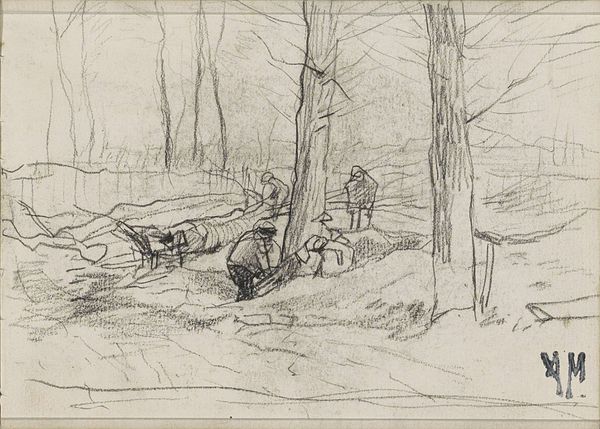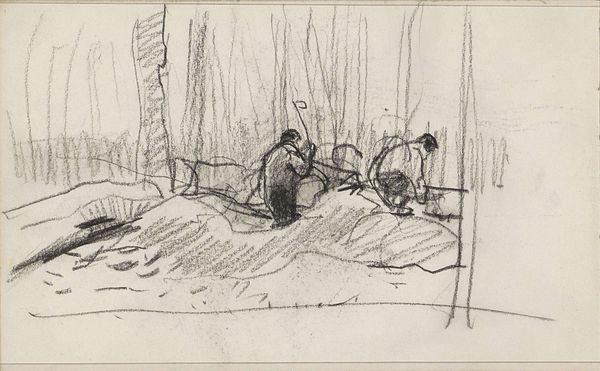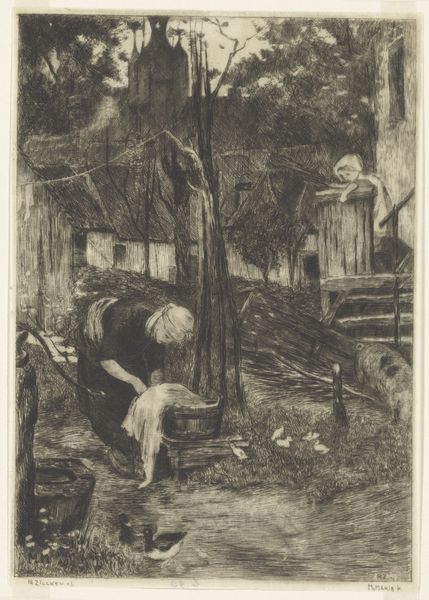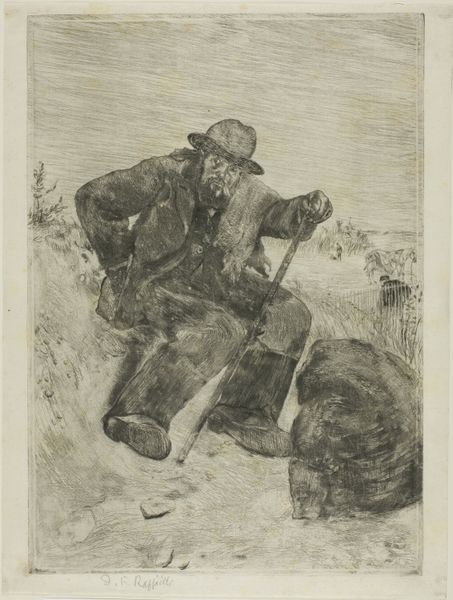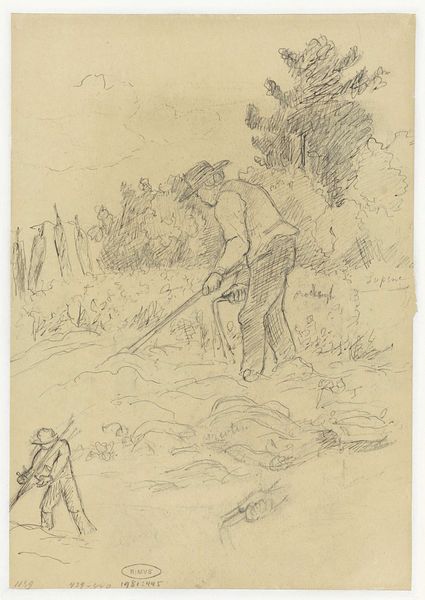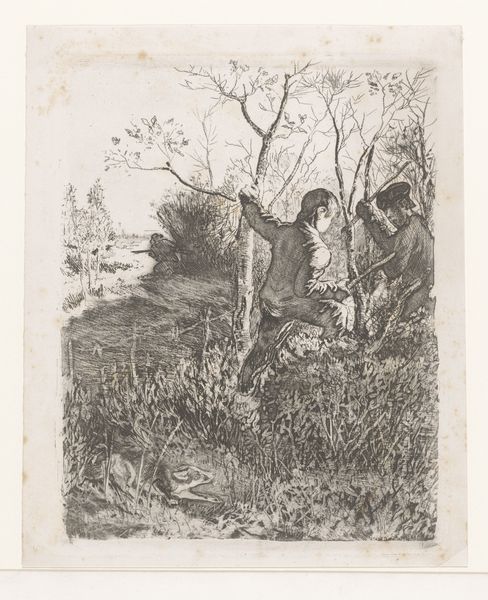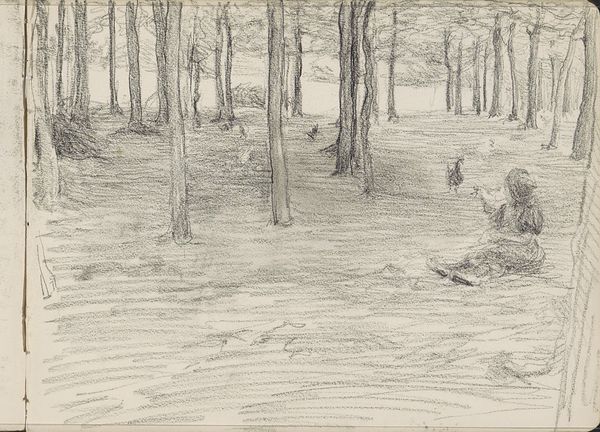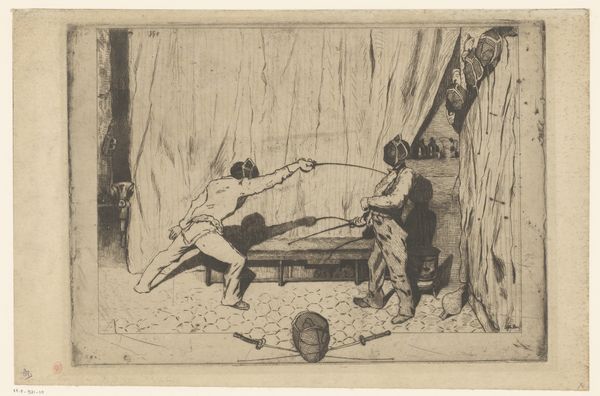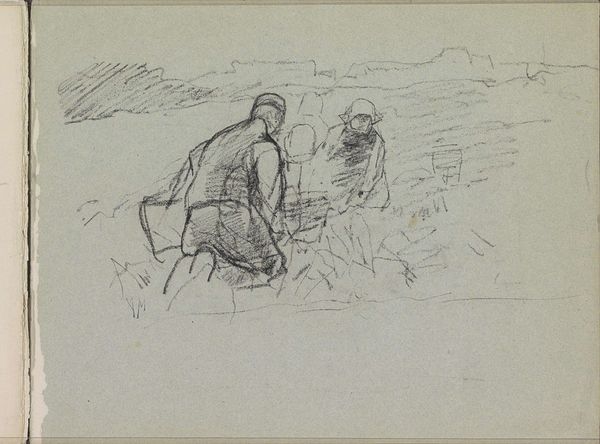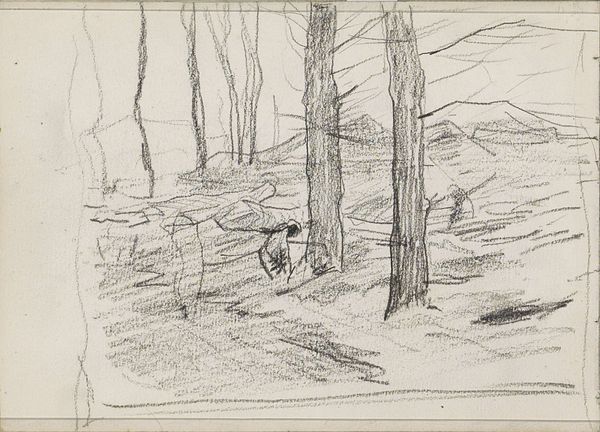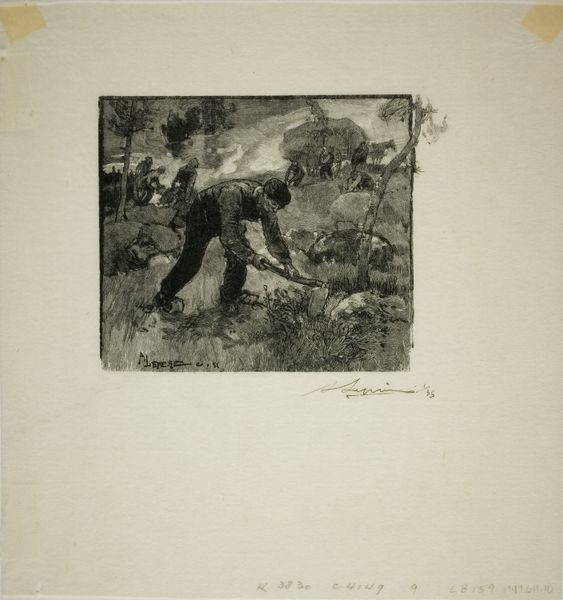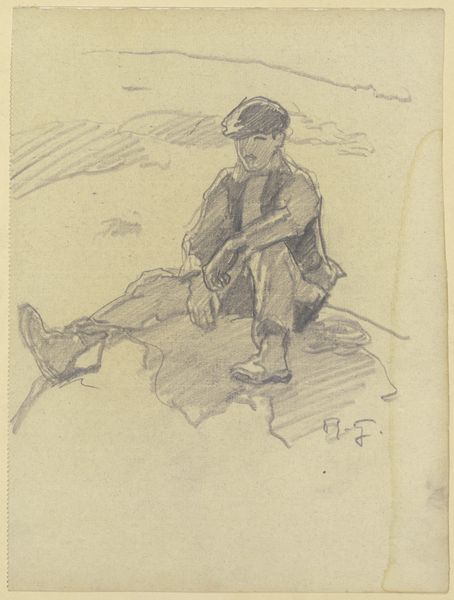
drawing, pencil
#
drawing
#
dutch-golden-age
#
impressionism
#
pen sketch
#
pencil sketch
#
landscape
#
pencil
#
realism
Dimensions: height 280 mm, width 214 mm
Copyright: Rijks Museum: Open Domain
Editor: Here we have "Boer aan het werk met een kruiwagen in het bos," or "Farmer working with a wheelbarrow in the forest," by Anton Mauve, dating roughly from 1848 to 1888. It's a pencil drawing, and what strikes me immediately is its quiet simplicity. How do you interpret this work, especially considering the context of its time? Curator: Well, I see it as more than just a simple landscape sketch. It’s important to consider the period. Mauve was working in a time of great social change, with increasing industrialization and urbanization. Rural life, and the people who lived it, became romanticized in art as a counterpoint to the perceived alienation of modern life. Do you see this romanticization here? Editor: I can see the appeal of the rural ideal, particularly when viewing it from an urban perspective. But I don’t see the glorification, only raw depiction of hard labour. Curator: And that’s interesting, because artists like Mauve played a role in shaping how society viewed these rural figures. They weren't just passive observers. Think about the museums and galleries displaying these works. Who were the patrons, and what did they seek in these images of rural life? Editor: So you're saying the image itself becomes a political statement by virtue of its exhibition? Highlighting labour or those typically overlooked becomes charged, regardless of the artist's explicit intention. Curator: Exactly. The very act of representing the rural working class in art destined for the walls of wealthy collectors has inherent socio-political implications. How the art is promoted in the context of Impressionism and Realism matters to me as well. It helps challenge traditional hierarchies in art. What do you make of this now? Editor: It does put the sketch in a new light. Thinking about it now, I see that it may appear deceptively straightforward but represents an idealized world presented for consumption and admiration within particular social structures. Thank you, I definitely learned something new! Curator: Indeed, considering who consumes the art gives a new way to appreciate the layers beneath this simple sketch.
Comments
No comments
Be the first to comment and join the conversation on the ultimate creative platform.
